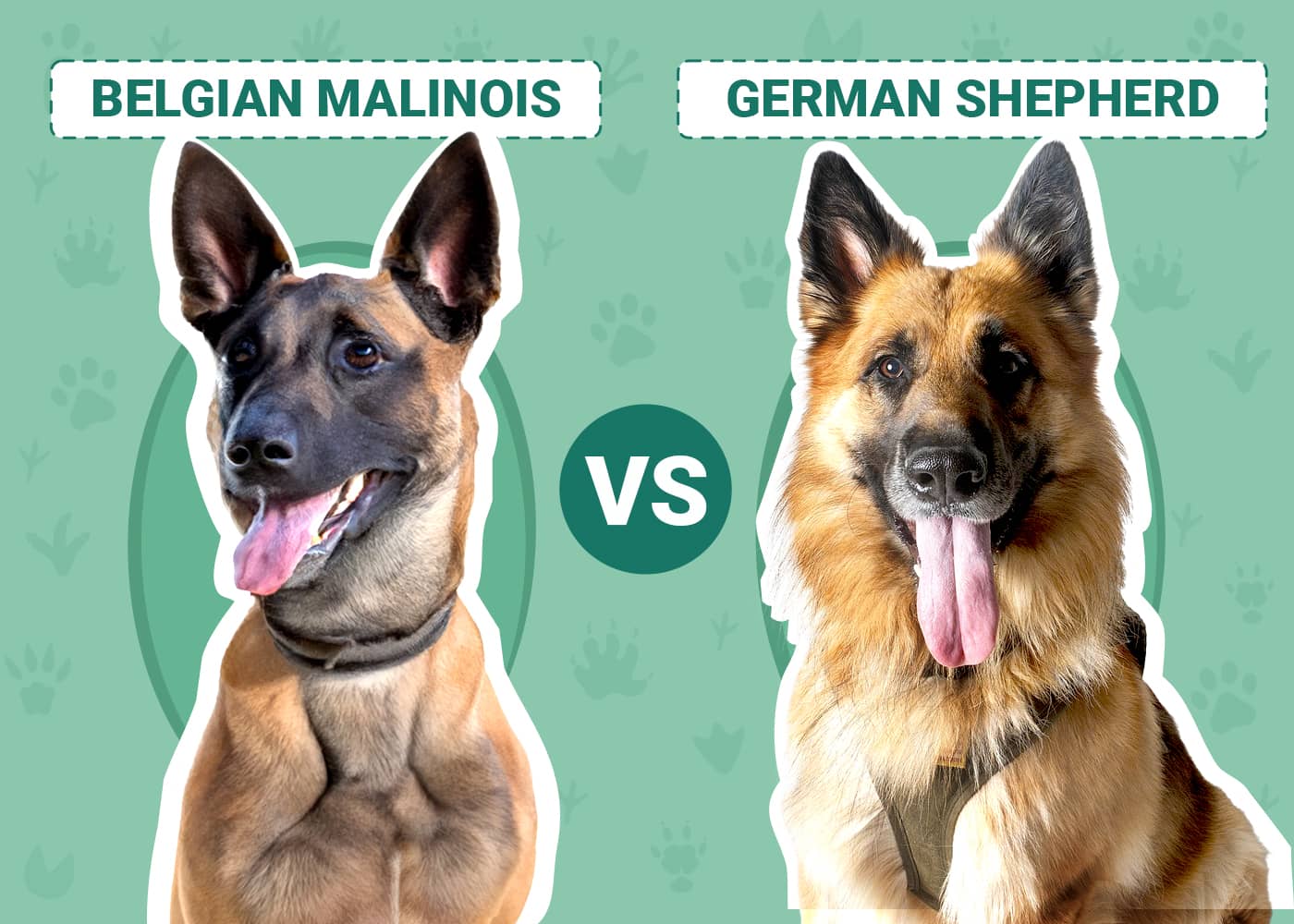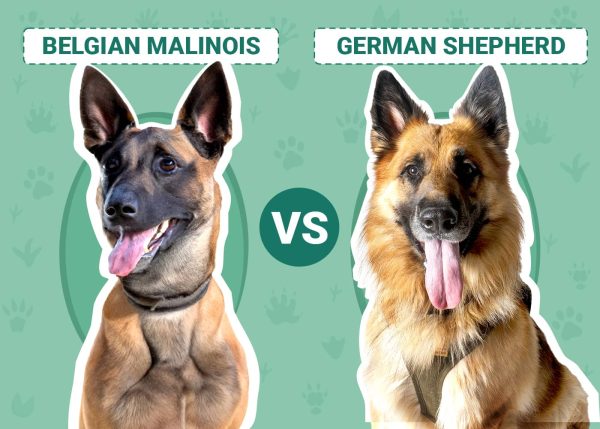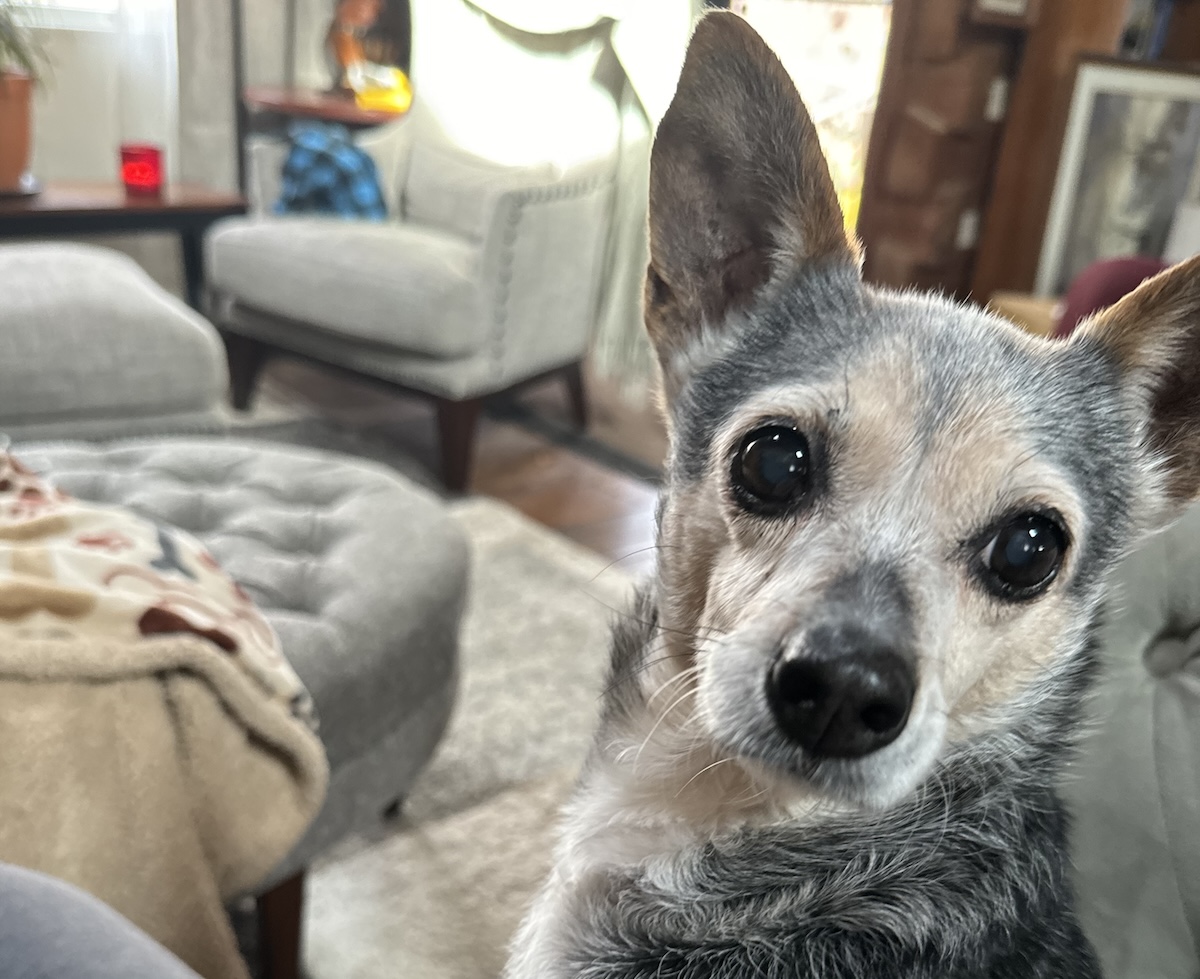Click to Skip Ahead
If you’ve ever seen what appears to be a rather slim German Shepherd, chances are that you might actually be looking at a Belgian Malinois. These two breeds are similar in appearance, but when you put them next to each other, it becomes easy to tell them apart.
But besides looking quite alike, these dogs also have similar temperament traits. So, if you’re trying to decide between the German Shepherd and Belgian Malinois, you’ve come to the right place!
Here, we compare and contrast these breeds to highlight what makes them alike and what sets them apart.
Visual Differences
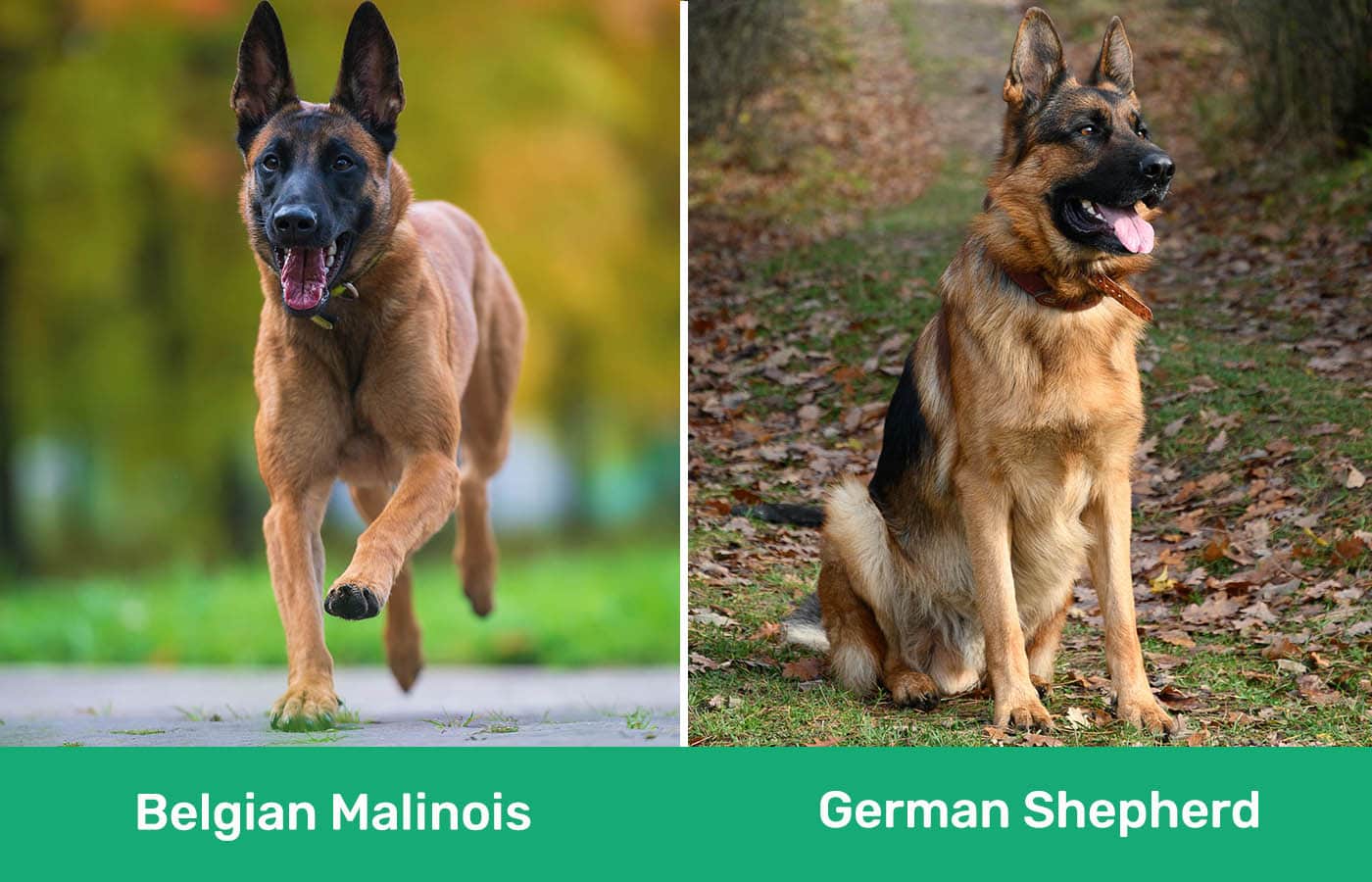
At a Glance
- Average height (adult): 22–26 inches
- Average weight (adult): 40–80 pounds
- Lifespan: 14–16 years
- Exercise: 2 hours per day
- Grooming needs: Easy to moderate
- Family-friendly: Often
- Other pet-friendly: Sometimes
- Trainability: Intelligent, loyal, eager to please
- Average height (adult): 22–26 inches
- Average weight (adult): 50–90 pounds
- Lifespan: 7–10 years
- Exercise: 2 hours per day
- Grooming needs: Easy to moderate
- Family-friendly: Yes
- Other pet-friendly: Sometimes
- Trainability: Intelligent, loyal, eager to please
Belgian Malinois Overview
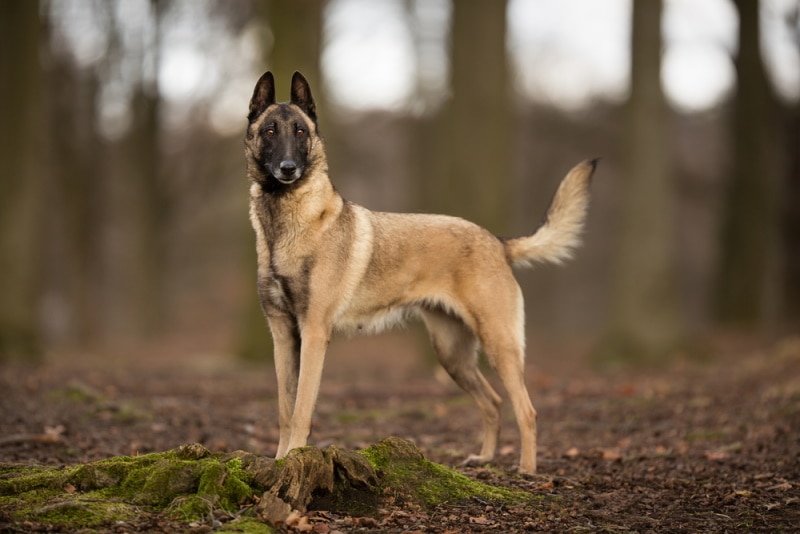
The Belgian Malinois (also called the Mal) was bred in Belgium near the city of Malines to be a herding dog. The breeders were more interested in producing a livestock herder with a strong work ethic over how the dog looked. This eventually led to the Mal becoming the favorite herder for Belgian cattlemen and sheepherders.
The Mal made their way to North American shores in 1911, and after dwindling around World War II, they saw a resurgence in the early 60s. They are still used as herding dogs today but are popular with the military and police.
Personality / Character
The Mal is a highly intelligent, confident dog that forms strong bonds with their human companions. They can be friendly but are quite wary of people whom they don’t know and need an owner with experience who can train them with a firm but gentle hand.
Mals have a high prey drive, so they tend to chase smaller animals that cross their path. But if raised with other pets, they will likely be more accepting. They are close to their family, but young children should always be supervised when interacting with a Mal.
They aren’t aggressive but can be assertive due to their confidence, and they tend to be territorial and sometimes jealous. It’s important to note that some Mals never adjust to living with other dogs.
Training
Training the Mal can go quite smoothly because they are eager to please, devoted, obedient, and smart. When you combine all these traits, you have a dog that can be quite easy to train. However, they do need an experienced dog owner.
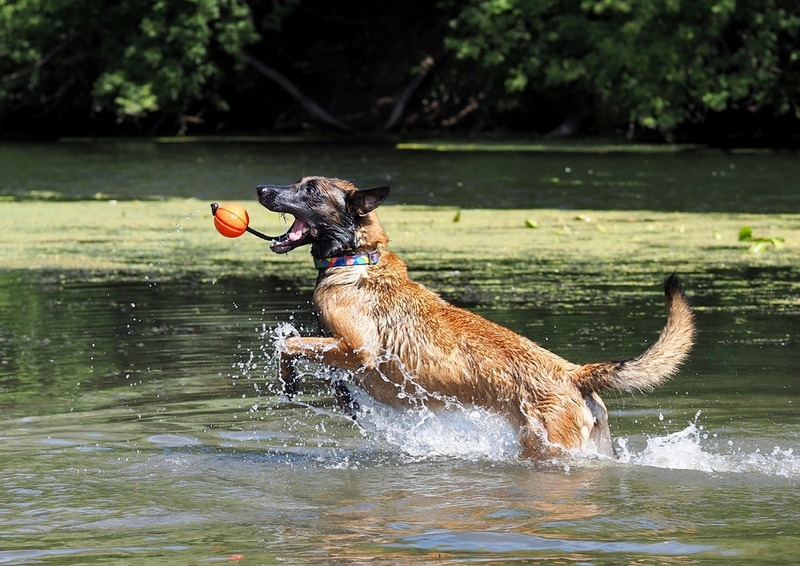
Exercise
The Mal is a high-energy breed and requires a great deal of exercise! They need about 2 hours of exercise daily, which should include walks in addition to playtime. Three walks a day would be ideal, and giving them the opportunity to run and go on hikes is best.
Since these are working dogs, they will excel in agility and herding trials in addition to obedience training.
Health & Care
You’ll need to feed your Mal high-quality dog food for large and high-energy dogs. The food must also reflect your dog’s current age and weight, and don’t give them table scraps.
Groomingthe Mal is easy. You just need to brush them a few times a week to help reduce the shedding. They have a double coat, which means they will shed excessively in the spring and fall, so be prepared for more frequent brushing. Baths might only be necessary every other month, but like all dogs, you’ll need to brush their teeth and trim their nails regularly.
The Mal is an overall robust and healthy dog, but there are a few potential health conditions that you should be aware of:
- Cataracts
- Elbow dysplasia
- Hip dysplasia
- Progressive retinal atrophy
This isn’t to say that your Mal will suffer from all or any of these problems, of course. Still, it’s good to be familiar with the potential health issues.
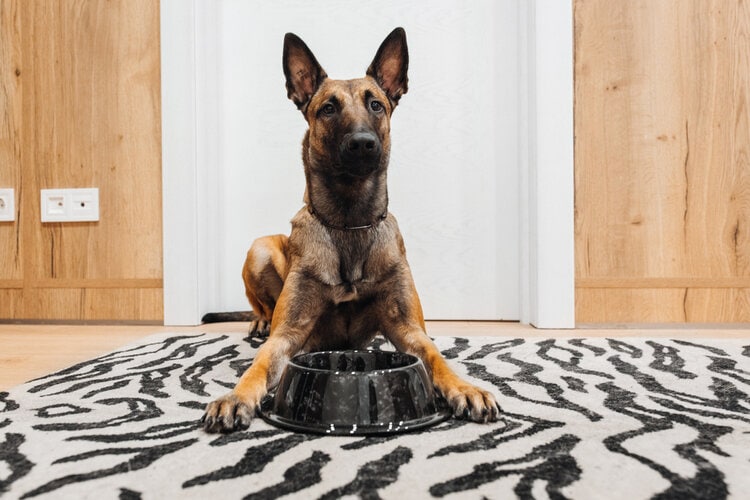
Suitable for:
The Mal is an excellent dog for someone looking for a guard or watchdog or just a loving companion. That said, they need someone active and willing to take them out for extensive exercise every day. They would do best in a home with a fenced yard.
A Mal also needs an experienced dog owner who knows how to train and handle large, energetic, and strong dogs. They can be aloof with strangers and would be best in a home without other pets. They should be fine with young children, but it is safest if they are raised with them.
German Shepherd Overview
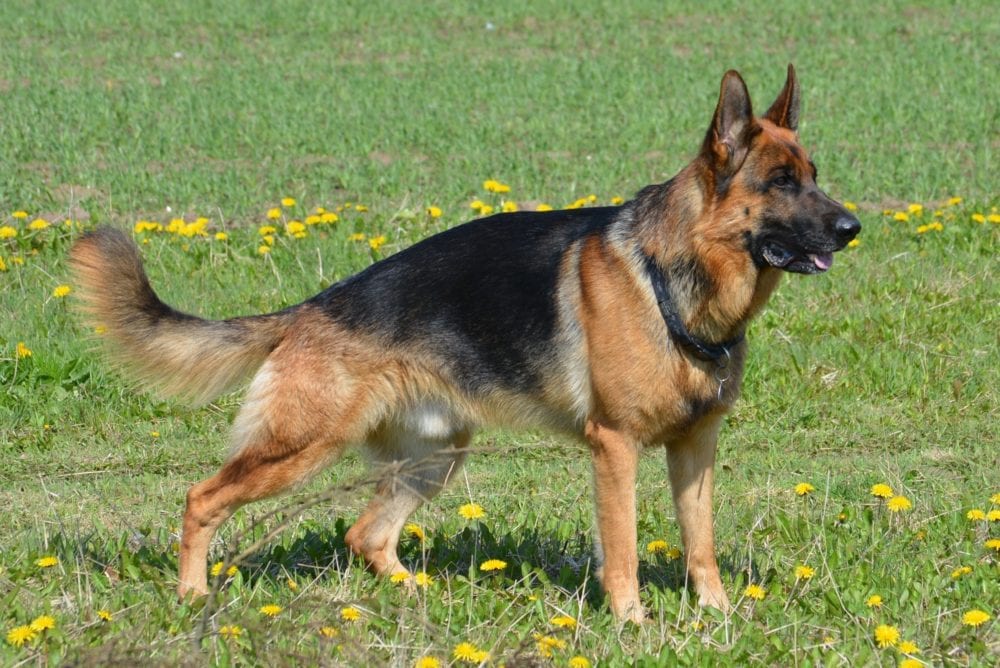
As the Belgian Malinois is from Belgium, the German Shepherd Dog (GSD) is from Germany. The first known GSD was developed in 1899, and like the Mal, they were bred to be a herding dog in addition to guarding livestock.
The primary breeder of the GSD, Captain Max von Stephanitz, emphasized that the dog’s intelligence, temperament, and devotion were far more important than their looks. But the GSD is certainly not short on beauty!
The GSD was officially recognized by the AKC in 1908 and has long been a favorite dog around the world. Like the Mal, they are commonly used by the military and police.
Personality / Character
GSDs are among the most loyal and courageous dogs out there. They are highly intelligent, loving, and willing to put their lives on the line to protect their loved ones.
They get along well with children and other pets, but it is best to socialize them starting as puppies. GSDs are wary of strangers and need experienced owners who know how to handle strong and proud dogs. While they don’t make new friends too easily, they are extraordinarily loyal when they do.
Training
Like Mals, GSDs are smart, loyal, and eager to please, so they are quite trainable. They learn quickly and retain the lessons easily. Like most dogs, they respond best to positive reinforcement.
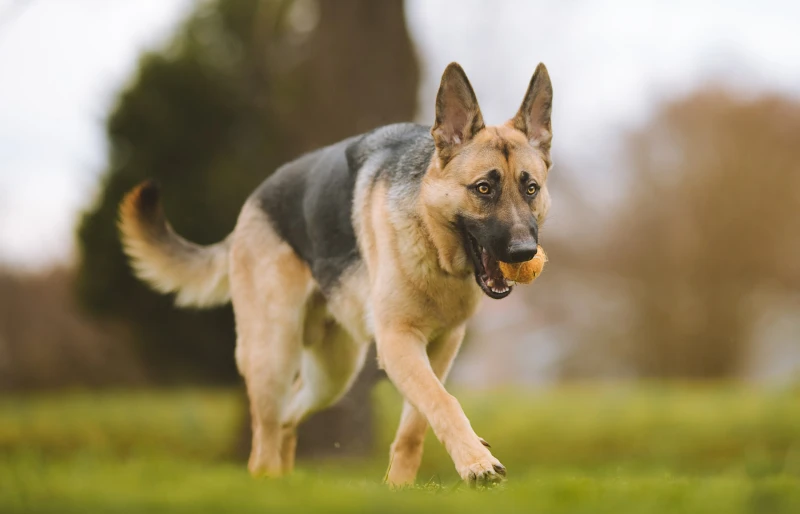
Exercise
GSDs need at least 2 hours of exercise daily, which should include three walks a day in addition to playtime and an activity that enables them to run.
They excel at tracking, herding, and agility trials, giving them much-needed physical and mental exercise.
Health & Care
The GSD needs dog food that reflects their current age, weight, and activity level. Since these are large and energetic dogs, their diet must reflect this, so aim for high-quality dog food (you can ask your vet for recommendations).
Grooming the GSD isn’t much different from that of the Mal, except their coats are thicker, which means more shedding and consequently, more brushing. That said, you’ll only need to brush them a few times a week normally and then daily during the spring and fall shedding seasons.
GSDs are prone to several health conditions, including:
- Allergies
- Bloat
- Elbow dysplasia
- Enlarged heart
- Hip dysplasia
Their lifespan is definitely less than that of the Mal, which is about 14 to 16 years. The GSD’s is about 7 to 10 years.
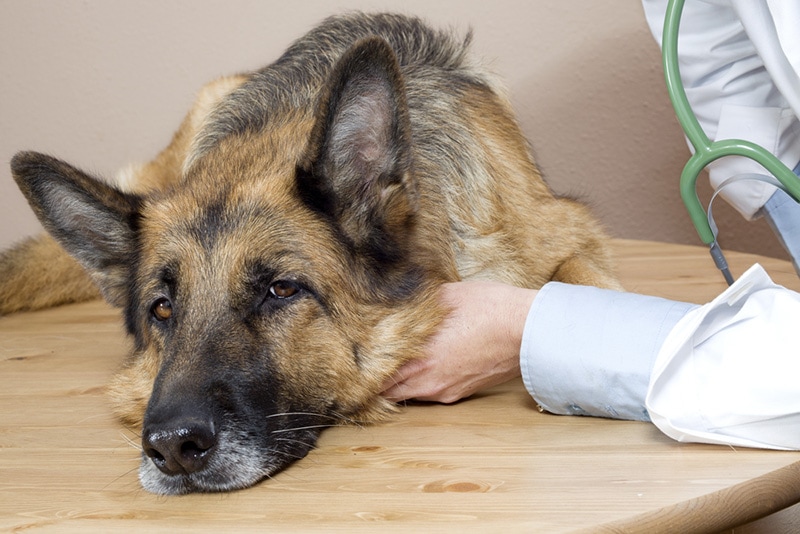
Suitable for:
GSDs make excellent watch and guard dogs but are devoted companions overall. They need an active companion to take them out for walks and hikes and spend time playing with them.
Potential owners will need to have experience training dogs, which is doubly important for the GSD. But if you’re looking for an energetic dog that will do anything for you and cuddle up with you at the end of the day, the GSD might still be the perfect dog.
Which Breed Is Right for You?
You really can’t go wrong with either breed, particularly considering the large number of similarities. But the Belgian Malinois needs a more experienced dog owner to keep them in check. Part of the reason that German Shepherds are so popular is their devotion and love for their families. Overall, the German Shepherd edges out the Belgian Malinois as a family dog. But they are also a larger dog that sheds more than the Mal, so there’s more grooming involved. They are also predisposed to more health conditions, and their lifespan isn’t quite as long.
Ultimately, the choice is yours. Both breeds both need plenty of exercise, attention, and time devoted to them. But if you can make the commitment, either one will be an incredible companion!
See Also:
- Dutch Shepherd vs. Belgian Malinois: Differences Explained (With Pictures)
- Belgian Malinois vs Rottweiler: Differences Explained (With Pictures)
Featured Image Credit: (L) Best dog photo, Shutterstock | (R) Alexander Naglestad, Unsplash

